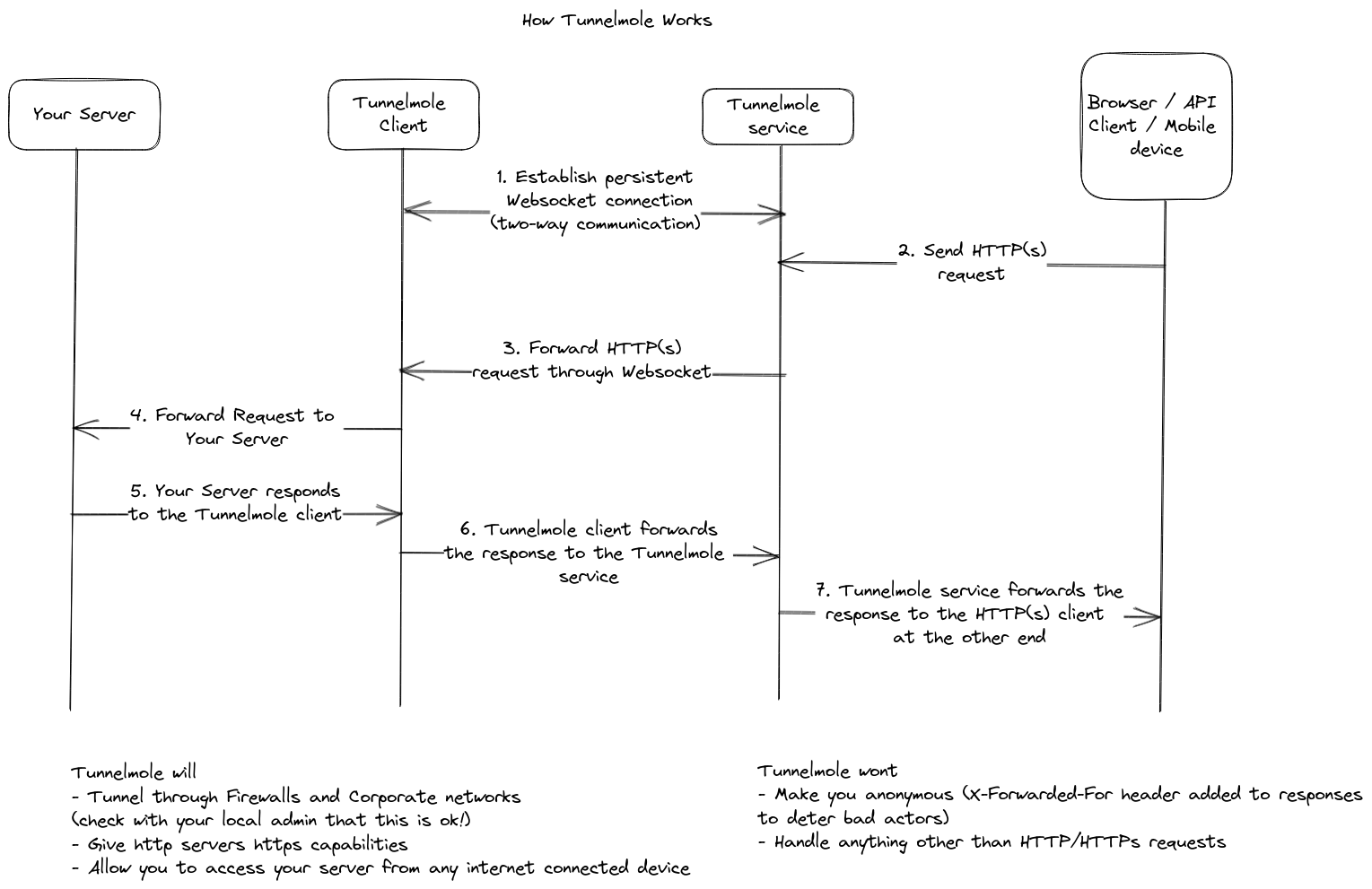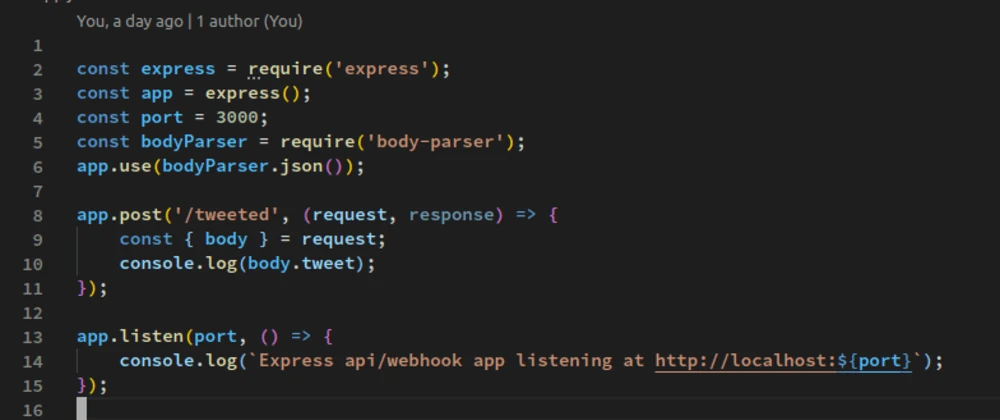How to Get a Public URL for Linux Mint with Tunnelmole
If you’re running Linux Mint and want to share a web server, API, or any local service with the outside world, you’ve probably hit a wall with network configuration, NAT, or firewall rules. Whether you’re developing, testing webhooks, or showing off a project, getting a public URL for Linux Mint can be tricky—especially if you don’t want to mess with your router or expose your home network.
Tunnelmole is an open source tunneling tool that makes it easy to get a secure, public URL for any service running on your Linux Mint machine. In this guide, you’ll learn how to use Tunnelmole to expose your Linux Mint desktop or laptop to the internet in minutes, with no cloud deploys, no firewall headaches, and no vendor lock-in.
Why Expose Linux Mint to the Internet?
Linux Mint is a popular choice for developers, makers, and tinkerers. But by default, services running on your Mint machine are only accessible from your local network.
Common use cases for exposing Linux Mint:
- Testing webhooks from SaaS providers (Shopify, Stripe, GitHub, etc.)
- Sharing a development site or API with teammates or clients
- Mobile device testing (accessing your dev server from your phone)
- IoT device integration and remote debugging
- Running demos or proof-of-concept apps without deploying to production
But opening ports on your Mint machine is often blocked by NAT, firewalls, or ISP restrictions. That’s where a tunneling tool like Tunnelmole comes in.
What is Tunnelmole?
Tunnelmole is an open source tunneling tool that gives your locally running HTTP(s) servers a public URL. It’s designed for developers and hobbyists who need a quick, secure way to expose services running on their machine to the internet.
Key features:
- Open Source: MIT/AGPLv3 licensed, self-hostable, and auditable.
- Free public URLs: Instantly get a public HTTPS URL for your service.
- Custom subdomains: Use a memorable subdomain (paid or self-hosted).
- Native Node.js app: Works on Linux Mint, Ubuntu, Debian, and more. Precompiled binaries also work on these platforms.
- No login required: Start tunneling in seconds.
How Tunnelmole Works on Linux Mint
Tunnelmole creates a secure tunnel from your Linux Mint machine to a public endpoint. Here’s how it works:
- You run Tunnelmole on your Mint machine, specifying the port your service is running on (e.g., 3000).
- Tunnelmole connects to the Tunnelmole service (hosted or self-hosted) and requests a public URL.
- Incoming requests to the public URL are securely forwarded to your local service via a persistent WebSocket tunnel.
- You share the public URL with anyone—no need to open firewall ports or configure NAT.

Step-by-Step: Expose Your Linux Mint Machine with Tunnelmole
1. Prerequisites
- A Linux Mint desktop or laptop
- Node.js 16.10+ (for npm install) or ability to run a precompiled binary
- A service running on your Mint machine (e.g., a web server on port 3000)
2. Install Tunnelmole on Linux Mint
You can install Tunnelmole in two ways: via npm (if you have Node.js) or by downloading a precompiled binary.
Option 1: Install with npm
sudo npm install -g tunnelmole
Option 2: Install Precompiled Binary
If you don’t have Node.js, use the install script:
curl -O https://install.tunnelmole.com/xD345/install && sudo bash install
The script auto-detects your OS and installs the right binary.
3. Start Your Service on Linux Mint
For example, if you’re running a Node.js app:
node app.js
# or for Python
python3 -m http.server 3000
Make sure you know the port your service is listening on (e.g., 3000).
4. Run Tunnelmole to Get a Public URL
In your terminal, run:
tmole 3000
Replace 3000 with your service’s port.
Example output:
Your Tunnelmole Public URLs are below and are accessible internet wide. Always use HTTPs for the best security
https://cqcu2t-ip-49-185-26-79.tunnelmole.net ⟶ http://localhost:3000
http://cqcu2t-ip-49-185-26-79.tunnelmole.net ⟶ http://localhost:3000
You now have a public HTTPS URL that forwards to your Linux Mint’s local service!
5. Test Your Public URL
- Open the HTTPS URL in your browser (from any device).
- You should see your service running from your Linux Mint machine.
- Share the URL with teammates, webhook providers, or test from your phone.
Advanced: Custom Subdomains and Self-Hosting
Use a Custom Subdomain
Want a memorable, stable URL? Use a custom subdomain:
tmole 3000 as mymint.tunnelmole.net
- Hosted service: Custom subdomains require a paid subscription.
- Self-hosted: You can run your own Tunnelmole service and use any subdomain you control.
Learn more about custom subdomains
Self-Host Tunnelmole
Tunnelmole is fully open source. You can run your own Tunnelmole service for maximum control and privacy.
Example: Exposing a React App on Linux Mint
Let’s walk through a real-world example: exposing a React development server running on Linux Mint.
1. Start the React App
npm start
# or
yarn start
By default, React runs on port 3000.
2. Start Tunnelmole
tmole 3000
Tunnelmole will output a public URL like:
https://abc12-ip-203-0-113-42.tunnelmole.net ⟶ http://localhost:3000
3. Access from Anywhere
Open the HTTPS URL in your browser—your React app is now live on the internet, running from your Linux Mint machine!
Use Cases: Why Tunnelmole is Perfect for Linux Mint Users
- Webhook development: Receive webhooks from Stripe, GitHub, or any SaaS directly on your Mint machine.
- Remote demos: Share your in-progress app with clients or teammates without deploying.
- IoT and device testing: Expose device APIs running on Mint to the cloud.
- Mobile testing: Access your dev server from your phone or tablet.
- Learning and experimentation: Quickly share projects with friends or online communities.
Security Considerations
- Public URLs are accessible internet-wide. Don’t expose sensitive services without authentication.
- HTTPS by default: Tunnelmole provides secure URLs.
Troubleshooting: Common Linux Mint Networking Issues
- Firewall blocks: If your Mint machine has a local firewall (e.g.,
ufw), ensure the port is open locally. - No Node.js? Use the precompiled binary install method.
- No outbound internet? Tunnelmole requires outbound WebSocket access to the Tunnelmole service.
- Works on all Mint editions: Cinnamon, MATE, Xfce, and more.
Frequently Asked Questions
Is Tunnelmole free for Linux Mint?
Yes! You can use Tunnelmole’s hosted service to get free public URLs for your Mint machine. Custom subdomains require a paid plan or self-hosting.
Can I use Tunnelmole on any Linux Mint edition?
Tunnelmole works on all Linux Mint editions (Cinnamon, MATE, Xfce) as long as you have Node.js or can run the precompiled binary.
Does Tunnelmole work with Docker containers on Linux Mint?
Absolutely. Run Tunnelmole on Mint and point it to the Docker container’s exposed port.
Summary: Instantly Expose Linux Mint to the Internet
Getting a public URL for your Linux Mint machine doesn’t have to be hard. With Tunnelmole, you can expose any service running on Mint to the internet in seconds—no port forwarding, no cloud deploys, no hassle.
- Open source, free, and self-hostable
- Works on all Linux Mint editions
- Perfect for webhooks, demos, and remote testing
Ready to try it? Install Tunnelmole on your Linux Mint machine and get your public URL today.
Try Tunnelmole now and expose your Linux Mint machine to the world:
curl -O https://install.tunnelmole.com/xD345/install && sudo bash install
tmole 3000
